Clematis change flower color from white to purple this year
I have bought Clematis last year, it bloomed white. But this year it blooms purple, which looks awful to me.
Anyway to change it back to white?
Comments (86)
gardengal48 (PNW Z8/9)
6 years agolast modified: 6 years agoThe clematis under discussion are all hybrids and any hybrid has an ability to revert back to the traits exhibited by its parents. That's why these plants do not come true from seed.
Amazindirt (7a TN)
6 years agoNo, that's not really how genetics works. For instance, a mule will never revert to being a horse. A hybrid is going to stay a hybrid forever -- it won't ever become the same as either of its purebred parents.
However, mutations certainly do happen. That's one of the ways we get new varieties of plants, after all. In this case, though, I don't think that's what's going on, because in that last photo you can see a gradation of colors -- some flowers are deep purple, some are purple fading into white, and some are white.
I'm guessing -- JUST guessing -- that in this case it may be some sort of reaction to an environmental issue. Perhaps some of the roots are diseased, perhaps some of the canes have been damaged, whatever.
In the case of the young plants that develop deeper color as they mature, that's no real mystery. Clems often do that. They simply become healthier and stronger as they grow, and their increasing health is reflected by better flowers. The same sort of thing happens with a lot of other plants as well.Related Professionals
Edmond Landscape Architects & Landscape Designers · Baltimore Landscape Architects & Landscape Designers · Fitchburg Landscape Architects & Landscape Designers · Rancho Cordova Landscape Architects & Landscape Designers · Seabrook Landscape Architects & Landscape Designers · Arlington Landscape Contractors · Addison Landscape Contractors · Berkeley Heights Landscape Contractors · El Reno Landscape Contractors · Hilo Landscape Contractors · Indianapolis Landscape Contractors · Louisville Landscape Contractors · Petaluma Landscape Contractors · Rockville Landscape Contractors · Santa Ana Landscape Contractorsgardengal48 (PNW Z8/9)
6 years agoFirst, plants are not animals. Don't even try to make that comparison because it is a false analogy. Second, no one said the parents were purebred........many plant hybrids have a very complex parentage and are actually hybrids of hybrids. There are also such things as intraspecies hybrids, which a good number of the LFH clematis are, and reversions within this type of closely related hybrids are quite common. Finally, I didn't say they turn back into their parents.......merely that they can revert to display some of the traits of their parents, which is entirely different. Flower and leaf color is among the least stable of the genetic traits that get passed on to hybrid offspring and reversion are NOT uncommon! You see it all the time in some highly hybridized plants - lilies, tulips, roses and iris are just a few.
Amazindirt (7a TN)
6 years agolast modified: 6 years agoNo, sorry, you're simply wrong. Again, genetics does not work the way you say it does. I have three years of professional school in medical sciences after college and four more years of graduate school after that -- including several courses in genetics -- to back me up here.
If you sincerely believe that you are correct, then please provide us with some concrete examples. Educate us.
In reality, you are probably thinking of mutations, as in plants that have mutated to display variegation. **Mutated plants** can and do often revert to their previous state for various reasons. Alternately, you may be thinking of a plant's OFFSPRING. If you breed two hybrid plants together, then the OFFSPRING will very likely show a range of characteristics gleaned from each parent. But that doesn't fit our situation here. Here, we are talking about a change WITHIN A SINGLE PLANT from one year to the next. And no, an already-existing hybrid plant does not "revert back to the traits exhibited by its parents". That just doesn't happen.
Again -- if you believe it does, please provide some concrete examples.
eta -- Oh, also remember that the world first learned about Mendelian inheritance from Gregor Mendel, who was studying -- guess what -- plants. The essential bits of genetics work pretty much the same in plants as they do in animals.
bhawbeck
6 years agoThe plant in the picture above is loaded with blooms again this year...thry haven't opened yet but as soon as they do I will post a picture. Someone above mentioned something about the canes being damaged or the soil/roots being diseased. I am not qualified to provide any kind of information to answer that however the plant is gigantic and seems to thrive in that location......BUT it did remind me that last year I trimmed the canes back just as the spring growing season was about to start, which included some live plant I did not do that this year to the same extent. Perhaps related....?
Amazindirt (7a TN)
6 years agoIt will be fascinating to see how your plant blooms! I will go way out on a limb here and predict that it will bloom normally this year -- but I could easily be wrong!
buyorsell888
6 years agoClematis do often have weird blooms in response to weather...which is what the photo posted by bhawbeck looks like to me though none of mine have ever had that many weird blooms at once.
buyorsell888
6 years agoI have acid soil, mophead hydrangeas are blue here unless you treat the soil to make them pink but I have never had any Clematis not be the color they are supposed to be....I do not believe for one minute that ph changes Clematis color...
gardengal48 (PNW Z8/9)
6 years agolast modified: 6 years agoI have no intention of entering into an argument about this except to say that the phenomenon DOES exist - and it is fairly well documented. And I am not exactly uneducated, having a degree in horticulture and a very sound understanding of botany and plant genetics. Abnormalities, sports and reversions in the plant world occur all the time that do not occur with animals.
I can also state with a strong degree of certainty that root or cane damage or cultural conditions (other than the degree of sunlight) will have NO bearing on flower color. A reversion, sporting or a virus can have that effect, however.
Amazindirt (7a TN)
6 years agolast modified: 6 years agoAgain -- no, I'm sorry, you're simply wrong. Again, you appear to be confusing either plant mutations or the offspring of plant breeding with the possibility of changes occurring within a single plant due to breeding.
"sports and reversions" -- again, sports and their reversions refer to mutations, like variegation, and not to the results of hybridization. I've already explained this.
"I can also state with a strong degree of certainty that root or cane
damage or cultural conditions (other than the degree of sunlight) will
have NO bearing on flower color."Diseases can easily affect flower color -- like tulip breaking virus, for instance. Stress can also easily affect flower color. And yes, of COURSE cultural conditions can affect flower color, especially when they stress the plant. Seriously, how can you not know that already?
Here's just one example, from Texas A & M: heat stress.
-- "Our first discovery came from the growth chamber studies which revealed
that roses are most sensitive to heat stress about 2 weeks before they
flower. The heat treatment caused all roses to develop smaller and paler
flowers...." http://agrilife.org/rose/heat-tolerance-of-roses/Here's another example: nitrogen deficiency.
-- "Flowers
of the darker colored cultivars may appear several
shades lighter than normal" http://www.rosecare.com/deficiencies.html-- "Too little, and the rose will have yellow leaves, no new growth, and small pale roses." http://www.heirloomroses.com/info/care/how-to/fertilize/
You see? I can actually provide specific examples to back up my claims. How about you?
Now, notice that in both of these cases, environmental stress causes small pale flowers. Now look at that last clematis picture on this thread. What do you see? Small pale flowers. Hmmm. Could there possibly be a connection there?
Again -- hybridization has nothing whatsoever to do with changes within an already existing plant. Mutations may, as I've stated before; so can disease or environmental stress -- and "environmental" might include a wide range of things, from heat to chemicals to mechanical damage.
gardengal48 (PNW Z8/9)
6 years agoYou are comparing apples to oranges. We are talking about changing colors completely - not affecting colors like fading, or paling or washing out from lack of sunlight or too much sunlight or plus or minus any specific nutrient - but a complete turn around color change, from purple to white. Yes, a disease could possibly cause this but this is vastly different from viral breaking. And cultural or growing conditions do not account for ANY sort of total color change - the ONLY exception is with hydrangeas!!
Seriously, I'm surprised YOU do not know that already!! See......I can be just as snarky and condescending as you. Let's just agree to disagree - I have more important issues to focus my attention on.
Amazindirt (7a TN)
6 years agolast modified: 6 years ago"You are comparing apples to oranges. We
are talking about changing colors completely - not affecting colors like
fading, or paling or washing out from lack of sunlight or too much
sunlight or plus or minus any specific nutrient - but a complete turn
around color change, from purple to white."No. Look at that photo. Some of the flowers are dark purple, some are lighter purple, some have areas paler than other areas, some are nearly white. We're definitely talking about "paling or washing out" -- from whatever cause.
"Yes, a disease could possibly
cause this but this is vastly different from viral breaking. "Of course it is. I never said otherwise.
"And
cultural or growing conditions do not account for ANY sort of total
color change - the ONLY exception is with hydrangeas!!"Again -- look at the photo. We're not talking about changing a flower from pink to blue. We're talking about making a normally dark flower become pale. And -- oh look, what a surprise! -- the paler flowers are also smaller. And, as I've already explained, small pale flowers can be caused by multiple different stressors, which might possibly include both disease and environment. But which is NOT caused by any imagined "reversion" of a plant's hybrid status. Because -- yet again -- that isn't how genetics works.
buyorsell888
6 years ago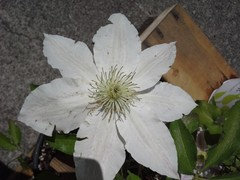
I was at a store today with a garden center and they had at least a dozen Clematis Vancouver Cotton Candy with flowers bleached completely white by the sun....IF a person purchased at the end of blooming period without a tag, person might think they were buying a white Clematis and that it changed color when it bloomed the following year....
newly opened flower on the same plant:

Amazindirt (7a TN)
6 years agolast modified: 6 years agoYup. And it's not just the sun -- flowers like Nelly Moser can easily bloom pale when they are young or stressed. I was looking through a bunch of my old photos the other day and found this pic of an old Nelly I used to have --

A better flower from the same plant, still pale compared to the ideal for the variety --
Also, I've been reading that pH can actually affect color and color intensity in multiple types of flowers, including morning glories and others. So now I want to do an experiment -- grow multiple plants of the same variety, like Nelly, side-by-side in containers, with one in acidic soil and the other in alkaline soil, and see what happens!
lady_alicia Zone 5/6 PA
6 years agoI also have experienced the change in color of my Clematis. I purchased a dark purple variety years and years ago (don't have pictures), and it's been light purple for the last, say, six years. People have asked if I was sure that I purchased dark purple, and as a gardener of many different types of flowers, I know what I purchased. Not to mention that I NEVER plant anything pale in color against the light brick of my house. I always plant dark colors or fuschias...things that contrast well with my house. Only against my dark fence will I plant white or other light-colored flowers.
A master gardener friend of mine suggested to feed it more, as they are heavy feeders. Plus, it wasn't blooming at all for two summers in a row. So I started to feed it more often and started seeing more blooms. However, the blooms are still light purple. I can't help but think that perhaps it's a hybrid and reverted back to whatever it was crossed with. I thought of removing it to plant another variety, but I don't want to go through this again. :) I love Clematis! I have a dark purple and a maroon in my back yard that I adore, and I have pictures of those in case they ever change! Then I'll have undeniable proof. :)
If you look at this picture -- which isn't the best, I know -- down on the right, you'll see a different-looking flower. It's got pointy edges and it was different in color. So I think it's whatever they crossed it with originally. ??

This was a good year for blooming (below).....just wish it would have been dark purple! :)
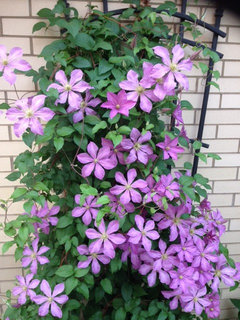
Glad to know I'm not the only one experiencing this problem.
Happy gardening!
Amazindirt (7a TN)
6 years agolast modified: 6 years agoIt's not a hybrid reverting, so you can cross that off your list. But there are several other possibilities.
First, that darker bloom at the bottom is just opening -- and clematis blooms usually are darker when they first open. Just look at the pics that buyorsell888 and I posted. The darker blooms are younger ones -- they fade as they age. Go back and look at that darker bloom after a day or two, and I'm betting it will be just as pale as the others.
Second, many clematis are sold with the wrong labels. So you may very well have thought you were buying a dark purple vine -- but that may not have been what you actually purchased.
Third, the more I read about pH and flower color, the more I'm wondering about it. No, it is actually NOT just hydrangea flowers that are affected by pH -- because anthocyanins are essential in creating the red/purple/blue colors in flowers, and anthocyanins are very much affected by pH. We just see those effects more obviously in the hydrangeas than in most other flowers.
Someone farther up the thread suggested applying lime to the soil, and I think that's an interesting idea. I don't know whether it would make any color difference or not -- but we already know that clems thrive in more alkaline soil, so it wouldn't hurt anything to try.
buyorsell888
6 years agoI have limed my Clematis, years ago when I first started growing them and thought it was necessary in my acid soil area. However, the flower colors never changed. I stopped doing it as a waste of time....Very true that many plants, especially those sold at big box stores are incorrectly labeled. I see them all the time.....worst are packaged bulbs/perennials...
bhawbeck
6 years agoThe 2017 verdict is in....but looks like more purple than the mixed this year. Crazy thing! Still think it looks fab though!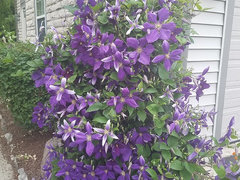
Amazindirt (7a TN)
6 years agoIt does look better this year. Thanks for posting the update!
Just flying by the seat of my pants, I'd say give it lots of good fertilizer this year -- preferably something organic with lots of good trace minerals -- and a good bit of lime. And then see what happens next year!brownest_thumb
6 years agoVariegated Japanese Maple hybrids are highly susceptible to reverting not to show the desired colors for which they were selected and rather sprout plain regular green leaves. Many online sellers specifically caution to prune off reverting branches. So...it's real.
Amazindirt (7a TN)
6 years agoYes, variegated mutations often do that -- as we've already discussed. That's an issue of a deleterious mutation (variegation, which decreases plant vigor by decreasing chlorophyll) reverting to its "normal" state. But that isn't what's going on with these clems.
My3dogs ME zone 5A
6 years agoI was looking at clematis on Bluestone Perennials and saw this listed with each one -
"Clematis General Information
Clematis are prized for their incredible flowers,
most as large as your hand. "Queen of the Climbers" will train onto
trellises, fences or arch over doorways. Stunning when used alone or
when several colors are mixed. Grower's tip: Truest colors require full
sun, as any shade will introduce purple tones. Flower color and bloom
size may vary while the plant is establishing."Amazindirt (7a TN)
6 years agolast modified: 6 years agoYup. One of the reasons why it's hard to trust the colors in clem photos -- they can look different depending on whether they've been growing in sun or shade! And very much yup to the last sentence -- "Flower color and bloom
size may vary while the plant is establishing." As I said in my first post in this thread: In the case of the young plants that develop deeper color as they
mature, that's no real mystery. Clems often do that. They simply become
healthier and stronger as they grow, and their increasing health is
reflected by better flowers. The same sort of thing happens with a lot
of other plants as well.s_armstrong11
6 years ago
Amazin... thank you for your consisten feedback that makes practical sense. I'm in MN, planted a single stem white clematis 2 years ago. I'be always had blooms but this year I have a lot mor foliage and my little single stem is maturing, growing, multiplying wonderfully! It's in acidic soil near an evergreen tree. Storm damage broke off all stems near the base of the plant mid-season. After regrowth my plant is re blooming, starting with bright white initially and now the new guys are more lilac. My original thought was the plant could possibly need more acid (like miracid) but reading through posts, I'm going to try feeding it more. It would also make practical sense to me that the plant experienced a level of trauma and is showing impact in the color variation.
Reading through these posts was fun and helpful!
gardengal48 (PNW Z8/9)
6 years agoDespite the bulk of this thread being taken over by someone who has confused human genetics with plant genetics - there is NO commonality or not enough to be meaningful - I can state with 100% certainty that soil pH will have no effect on changing flower color. AFA botanists and horticulturists can determine, this trait is unique to only certain species of hydrangeas. Period. Intensity, fading and the tonal quality of clematis flowers can be affected by the amount of sunlight received, age of plant, time of blooms (early season versus late season) and perhaps to some small degree by the type and concentration of fertilizer used. But that does not explain how a purple flowered clematis can change to a white flowered one in subsequent seasons. All that is left is that there is more than one vine in the planting or a genetic reversion.
Amazindirt (7a TN)
6 years agolast modified: 6 years ago" I can state with 100% certainty that soil pH will have no effect on changing flower color."
I'm sorry, but your "certainty" is completely mistaken.
"AFA botanists and horticulturists can determine, this trait is unique to only certain species of hydrangeas."
Not at all true. In fact, pH is known to affect flower color in multiple plant species.
Here's just a few random examples from a quick Google search:
-- US National Arboretum: "The two factors affecting flower color are pigments (in this case flavonoids) and the correct cell pH (acidity)"
http://www.usna.usda.gov/Research/yesclueanswer.html
-- Robert Griesbach, a plant geneticist: His lab also discovered that you can change the color of a flower, for example, by changing the acidity level (or pH) of the flower's cells. A change in the acidity level of a cell or soil, for that matter, can trigger pigment color changes in certain flowers like petunias and morning glories.
http://www.usna.usda.gov/Research/flowercolor.html
-- "Correlation of pH and Light Intensity on Flower Color in Potted Eustoma grandiflorum Grise." R.J. Griesbach, HORTSCIENCE 27(7):817-818. 1992.
-- "A single anthocyanin pigment can be deep blue or deep red or anything in between, depending on many different variables. One variable we understand to some extent is ph. The levels of alkalinity and acidity in flowers change the color of anthocyanins from the blue ranges to the red ranges."
http://www.hiddenvalleyhibiscus.com/misc/colors.htm
There are many more examples available, but that should give you the idea.
You're simply wrong, gardengal. Please get over it and move on.
Amazindirt (7a TN)
6 years ago@S_armstrong -- Thanks for the post and the kind words! Please post another photo in a day or two -- I bet you'll see that those violet flowers have paled out considerably, perhaps even gone completely white. It's no surprise that the flowers might look a bit different after stressful event, but I personally wouldn't advise giving it an acidic fertilizer; clematis are plants that actually tend to like more basic conditions than many plants do.
Todd Autman
6 years agoI have the HF Young clematis, it bloomed last year with small pale white-pink flowers. Now this year I will see if it blooms purple-blue like it is supposed to do. The flowers from last year were not pretty at all and looked very pale and not pale like delicate but pale and grayish. I think maybe it got shocked when it was planted but I am not sure. I am hoping this year it does turn purpleblue however.
NHBabs z4b-5a NH
6 years agoTake a photo when it blooms and get a refund from the nursery. I wouldn't expect a pink flower to change to purple, so it was most likely mislabeled. Sometimes there is some green added to clematis flowers if it is particularly cold when they bloom, and certain types fade in sunlight and may get to an much lighter color, but I haven't had either of those things happen with HF Young. It is worth tracking down the real HF Young because it is a lovely color, and when in bloom you cannot see leaves it is so full of blooms; it's a gorgeous 3 weeks. In my cold zone it doesn't have time for repeat bloom in late summer.
Marianne Verzi
5 years agoMy clematis, which has been deep purple (Not double) seems to be now growing these double white blooms. I'm actually loving it though...so beautiful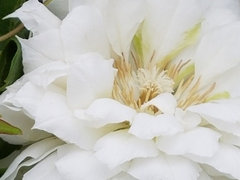
bhawbeck
5 years agoThe 2018 verdict is in....! 100% gorgeous and purple! Amazing plant. I did absolutely nothing different this year....you can look back on this string of posts to see what it looked like the last two years.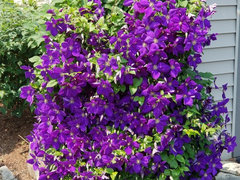
getgoing100_7b_nj
5 years agoI can confirm that clematis changes color with pH. I have an HF Young in a container that has bloomed its usual blue/violet color for two years. Recently I fed it slow release fertilizer meant for azaleas as I was out of the one for roses . I used it on 4 of my container roses as well and unfortunately they all dead now :(. Anyhow, the H F young is now blooming (indoors) and the blooms are all smaller and white, except for a single larger bloom that has a little blue. Clearly, pH is the only variable that was altered by the fertilizer. I have had blooms this time last year indoors which were normal blue.
Also, I had been wondering about the devastating death of all of my roses and chalked it up to untimely fertilization (indoors) even if it was slow release. Not I am getting around to the idea that it probably was the PH change that may have dealt the fatal blow.
Belinda Greer
3 years agoI put coffee grounds on this plant and it turn these beautiful Blooms dark Deep Purple I'm just wondering over time will they come back to this pretty color or is there something I can put on the plant to make it come back to the original color I don't like the dark purple leaves I like the original .

gardengal48 (PNW Z8/9)
3 years agolast modified: 3 years ago" I can confirm that clematis changes color with pH "
Sorry, but this scientifically/botanically incorrect!! Soil pH really has no bearing on altering flower color......ANY flower color! The only reason there is an association with soil pH and hydrangea flower color (and only on a couple of species of hydrangea) is because soil pH affects the availability of aluminum, which is really the source of any color change in hydrangeas. Even in appropriately acidic soils, if there are not adequate levels of Al present in the soil, the flower color will not change. And it has not been established that any other types of plants have a similar reaction. Either to aluminum (many plants find it very toxic) or any other plant nutrient.
pH can govern a lot of plant conditions but changing flower color is not one of them!!
The clematis in question faded to white from its typical blue because it flowered indoors without sufficient sunlight and the ability to photosynthesize efficiently and thus color up properly.
Amazindirt (7a TN)
3 years agolast modified: 3 years ago"Sorry, but this scientifically/botanically incorrect!!"
Oh, for heaven's sake -- not this again??
Gardengal, you have been proven wrong. The scientific literature says you're wrong, the direct experience of gardeners posting here says you're wrong.
Open your eyes and accept reality. You're simply wrong. PLEASE get over it, move on with your life, and stop beating this very dead horse.
gardengal48 (PNW Z8/9)
3 years agoPlease, feel free to show me documented scientific evidence that soil pH has any affect on flower color other than with a couple of species of hydrangea. And I have explained - scientifically - how that works. You can't....because there isn't any!!
btw, no one here has proved me wrong!! There can be various reason why a plant may change flower color but it has NOTHING to do with soil pH!! Cell pH, which affects pigmentation, is very different than soil pH. Don't believe me?...look it up. And it can be genetically altered but not chemically.
I would say YOU are the one beating a dead horse, insisting on morphological phenomena that simply do not exist. All I am trying to do is correct some blatant misinformation.
But feel free to go about your business and ignore, since you are so very sure I am wrong :-)
Amazindirt (7a TN)
3 years agolast modified: 3 years ago"Please, feel free to show me documented scientific evidence that soil pH has any affect on flower color other than with a couple of species of hydrangea."
I already did that, in this very thread, years ago. Have you forgotten already?
Here's those links again. There are many more out there.
-- US National Arboretum: "The two factors affecting flower color are pigments (in this case flavonoids) and the correct cell pH (acidity)"
http://www.usna.usda.gov/Research/yesclueanswer.html
-- Robert Griesbach, a plant geneticist: His lab also discovered that you can change the color of a flower, for example, by changing the acidity level (or pH) of the flower's cells. A change in the acidity level of a cell or soil, for that matter, can trigger pigment color changes in certain flowers like petunias and morning glories.
http://www.usna.usda.gov/Research/flowercolor.html
-- "Correlation of pH and Light Intensity on Flower Color in Potted Eustoma grandiflorum Grise." R.J. Griesbach, HORTSCIENCE 27(7):817-818. 1992.
-- "A single anthocyanin pigment can be deep blue or deep red or anything in between, depending on many different variables. One variable we understand to some extent is ph. The levels of alkalinity and acidity in flowers change the color of anthocyanins from the blue ranges to the red ranges."
http://www.hiddenvalleyhibiscus.com/misc/colors.htm
"There can be various reason why a plant may change flower color but it has NOTHING to do with soil pH!! Cell pH, which affects pigmentation, is very different than soil pH."
Ummmm.... gardengal... how do you think the cell pH gets altered, hmm?
Here's another source for you:
"Edaphic conditions like soil pH and mineral nutrient concentration can also induce variation in flower color (Shaked‐Sachray et al., 2002; Zhao & Tao, 2015) "
-- in: "Ecological causes and consequences of flower color polymorphism in a self‐pollinating plant (Boechera stricta) " New Phytologist 25 January 2018.
And here's another one:
"Environmental pH plays an important role in plant color. [....] In addition to soil pH, we also examined the effects of pH in irrigation water on flower color (Zhao et al., 2013). When irrigation water pH was at 4.0, herbaceous peony exhibited a lighter flower color with significantly reduced anthocyanin content and markedly increased petal pH."
-- in: "Recent advances on the development and regulation of flower color in ornamental plants" Frontiers in Plant Science April 27 2015
Cmon, gardengal. At this point you're just embarrassing yourself and wasting everyone's time.
Amazindirt (7a TN)
3 years agolast modified: 3 years agoThanks for the lovely photo, bhawbeck. In your case, there was an obvious environmental factor going on, something that led to plant stress -- whether that was the trimming you mentioned, or disease, or a change in weather, or whatever -- we'll never know specifically. But it's great that your plant recovered!
getgoing100_7b_nj
3 years agoGg, I am sorry but my clematis had bloomed indoors in its original violet blue color the previous two winters.
getgoing100_7b_nj
3 years agoI had specifically stated already that "i have had blooms this time last year indoors which were normal blue." Why are my factual first hand observations not valid over some theoretical presumption?
bella rosa
3 years agoHmmm...interesting thread. I planted a clematis two weeks ago. It was supposed to be a pink with white stripes, but it bloomed white with pink outlines. It's pretty, but it's not what I ordered. I contacted the vendor and they said that they think it needs more sun. They of course, don't know that it's already planted in a full sun area. I chalk it up to my soil. It will be interesting to see what color it will be next year.
Amazindirt (7a TN)
3 years ago@Bella rosa --
Clematis can be extremely frustrating that way. They are often mislabeled, AND the appearance of the blooms is very sensitive to environmental conditions and health of the plant. There are several varieties, for instance, that will bloom with doubled blooms at some times and singled blooms at other times -- and flower color on younger or stressed-out plants is often paler than on older or healthier plants, something that can be especially obvious on the striped varieties. Give yours a couple of years before you make any conclusions about its "true" appearance!bhawbeck
3 years agoI forgot to post the 2019 picture and then got an email about this thread. It is an amazing plant....did not trim it the past two years so am leaning towards (in my 100% unprofessional opinion) that maybe having caused the change. Am also glad it recovered! Will post 2020 when it happens.
HU-377939187
last yearLast year my Clematis flowers were pink with white edges, this year they are an irredescent purple. What did I do wrong and can I change them back to the pink and white?
charles kidder
last yearlast modified: last yearI've had many clematis whose color didn't look like the picture, but I've never had one that changed color in any meaningful way. Sorry to not be of any help.
Michael Shields
last yearlast modified: last yearMy purple star climatis changed my White Climatis into light electric mouve stars .... IT LOOKS FANTASTI!!!
HU-204977926
last year| came to this post as i have a white clematis which i purchased last year, it bloomed white and looked amazing but then suddenly died half way though the year. I assumed it was dead until this year when it suddenly started to grow, I was so excited to have it back but to my surprise the plant is now purple. Im not mistaken, it isnt from another plant as my garden is a new build which was built on a field and no soil has been brought in. its in exactly the same spot and is climbing the same trellis

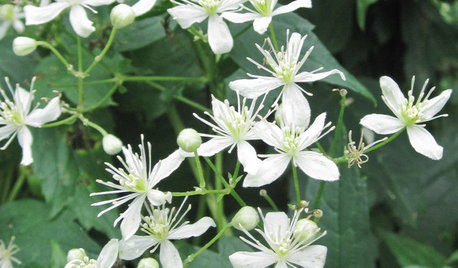
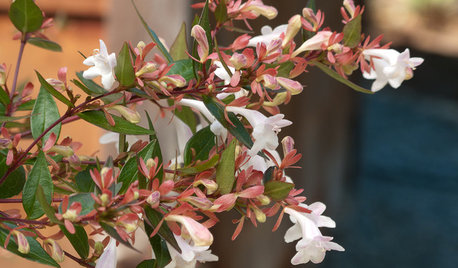
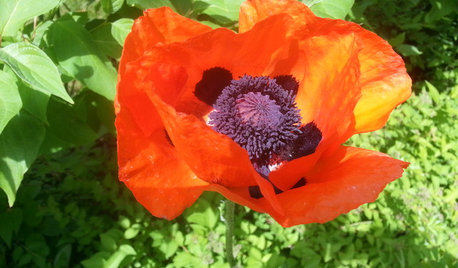
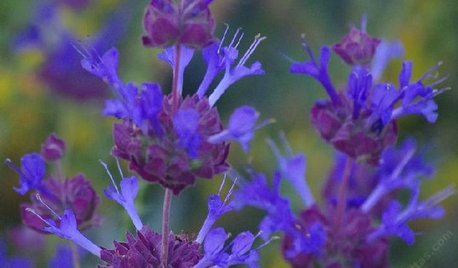
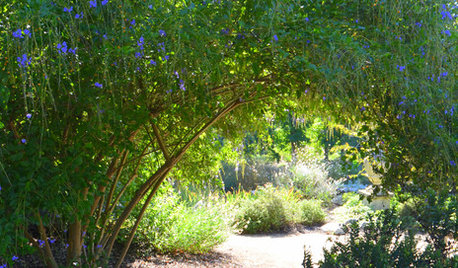
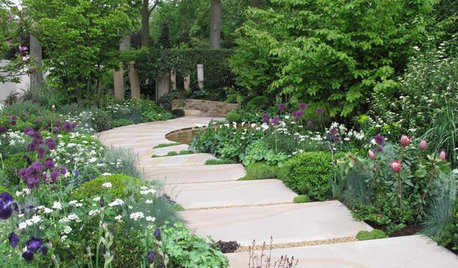
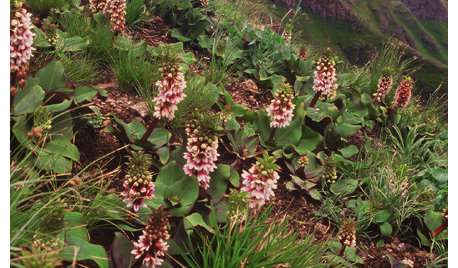
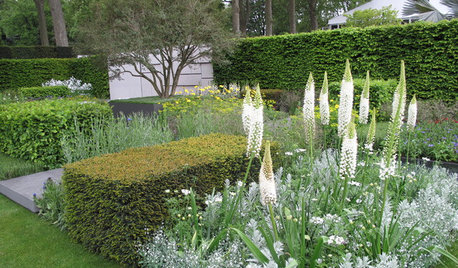







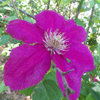
bhawbeck